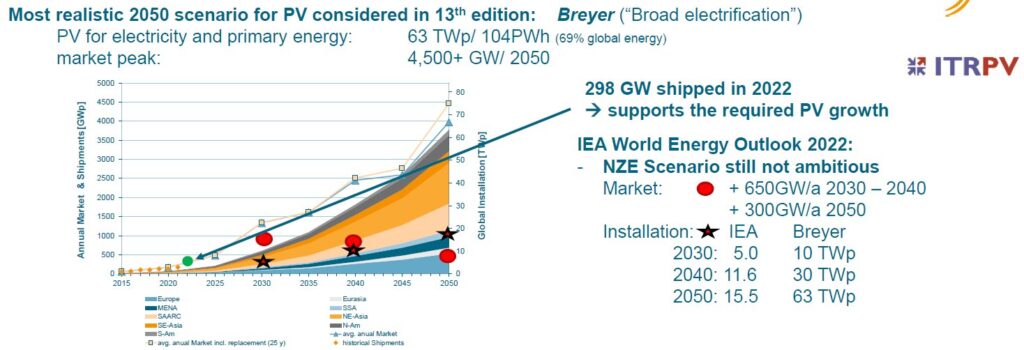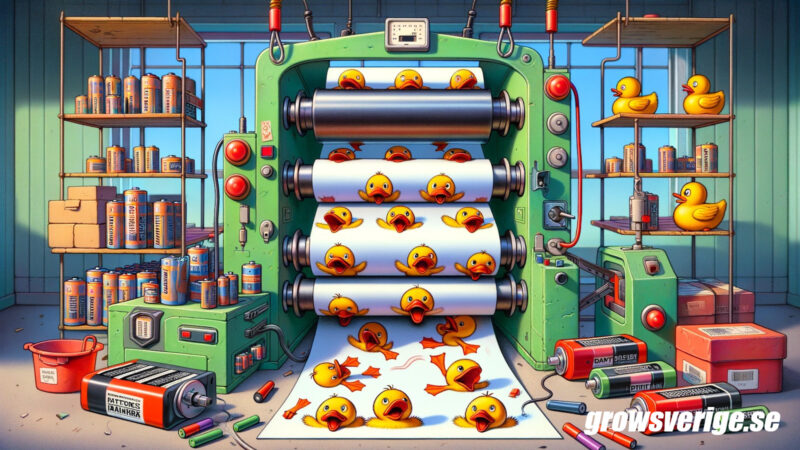A thread on PV expectations for the coming ten years: higher efficiences and lower costs due to a host of new technologies.
Learning in solar production (Swansons’ Law) is not slowing down but speeding up!
We often say every doubling of production lowers solar module prices by 20% but from
- 1976 to 2022 it was 24.4% and
- 2006 to 2022 it was 39.3%
Solar is becoming incredibly cost effective.

This is partly due to cheaper production “per piece” (15%) and partly due to the efficiency of each piece getting higher (8%).
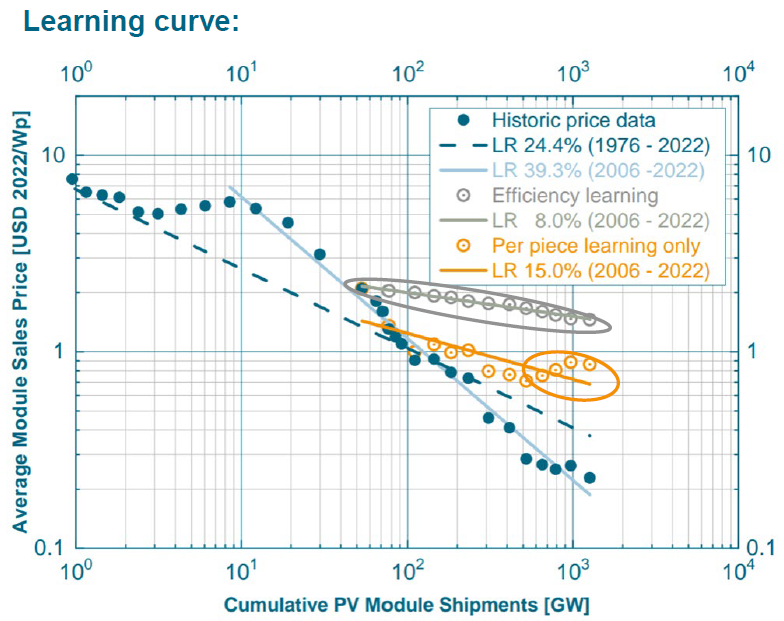
As prices of modules become lower, other project costs start to dominate, and efficiency per m2 becomes more important. Therefore I’m excited about tandem (=multi-layer) solar cells that promise efficiencies of more than 26%.

Call me fussy but I also like that busbars (these silver lines) on solar panels will become less and less visible and will probably disappear eventually. I think that will look nice.
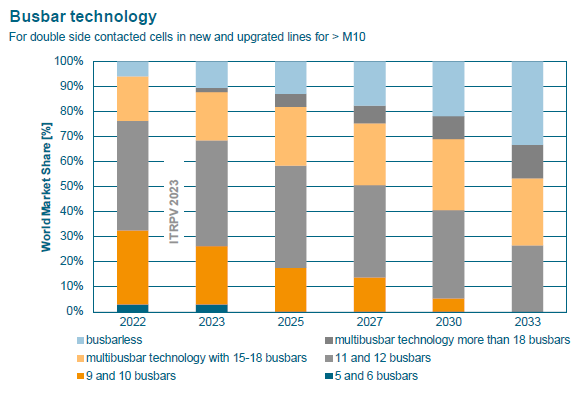
Solar modules use less and less silicon because wafers continue to become thinner. From 0.16 mm in 2022 to 0.13 mm in 2033. And at the same time the wafer size is increasing from 165×165 to 210×210 mm.

N-type material is taking over the market which might help achieve higher efficiencies and lifetimes (The N in N-type stands for “negative”, because there is an excess of negative charge carriers – electrons – by means of doping the silicon with phosphorus.)
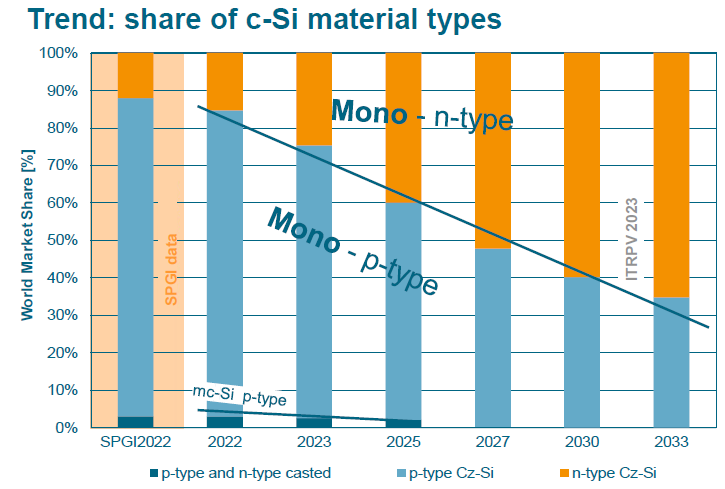
Other improvement will be TOPCon (Tunnel Oxide Passivated Contact) and SHJ (Silicon hetero juction where amorphous silicon is added to the wafer) that also facilitate higher efficiencies and might dominate before tandem cells offer even higher efficiencies.

Solar modules will also last longer and longer.
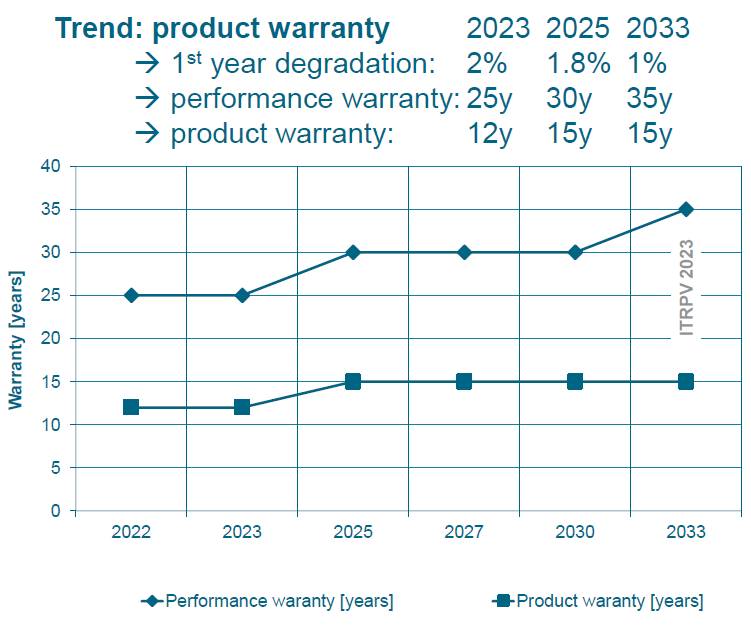
NREL expects prices for installation and per kWh to reduce by around 30% in the coming ten years. (I think price reductions will probably be higher than expected again.)

All in it gives me the feeling that the solar energy hurricane is still increasing in strength and like the VDMA I think @ChristianOnRE will probably be more right (again) than the @IEA‘s most ambitious scenario. Which is good: this is a hurricane the world badly needs.
/end
